
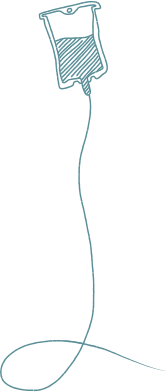
UNDERSTANDING BETA-THALASSEMIA
GENETICS OF
BETA-THALASSEMIA
Beta (β)-thalassemiaBeta (β)-thalassemiaa genetic blood disorder that reduces or eliminates the production of beta (β)-globin affects your body at the genetic level.
Genes and Genotypes
Genes usually come in pairs: 1 copy of the gene from your mother, and 1 copy of the gene from your father. You may see a pair of genes written down as 2 letters. This pair of letters is called a genotypeGenotypeyour genetic makeup for any trait, which may be labeled with a pair of letters, each representing the copy of a gene inherited from one of your parents.
A genotype can be used to describe the general way a characteristic you inherit will show up in you. However, it is important to remember that your genes are unique to you. Even if you share the same genotype with other people, the inherited characteristic may not show up in the same way.
To better understand the roles specific genes and genetics play in how your body (or your loved one’s body) functions, it’s helpful to have conversations with your doctor or read more information from trusted sources. Talk to your doctor or care team if you’re interested in learning more about you or your loved one’s specific genotype and how it may affect the severity of your beta-thalassemia.
Caregiver Tip
The most common blood test your loved one will have is the complete blood count. To learn more about this test, download the Understanding Beta-Thalassemia brochure.
Beta-Thalassemia Inheritance
Beta-thalassemia is a genetic diseaseGenetic diseasea disease that is caused by a genetic change caused by a change in a specific gene called the HBB gene.
People with beta-thalassemia are affected by the disease because they inherited 2 changed HBB genes, one from each parent. The HBB gene contains the instructions for creating beta-globin (a part of adult hemoglobin). A change in the HBB gene can lead to the instructions for beta-globin being incorrect, causing the body to produce reduced amounts of or no beta-globin protein.

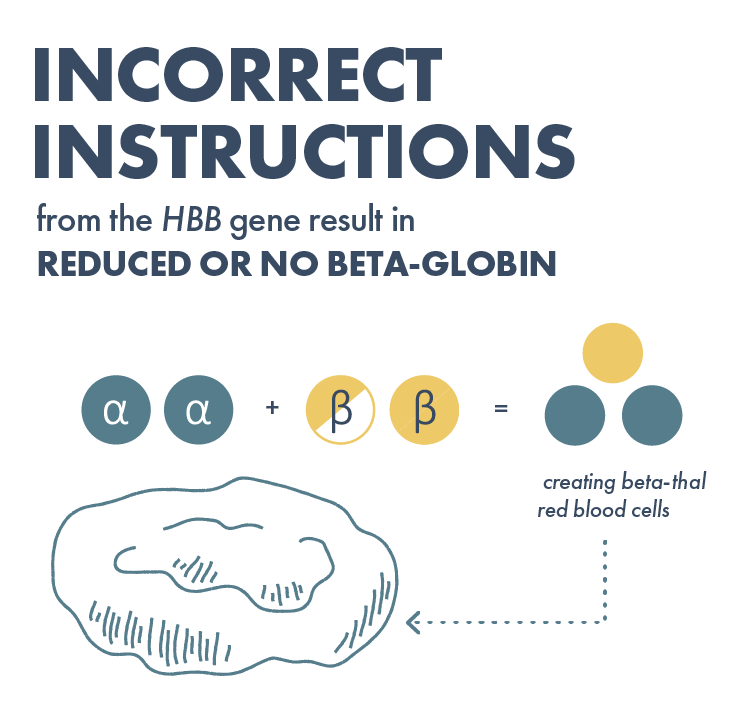
This imbalance results in an excess amount of alpha-globin proteins, which clump together and cause your red blood cells to die early. A lack of healthy beta-globin also means that there is less functional adult hemoglobin.
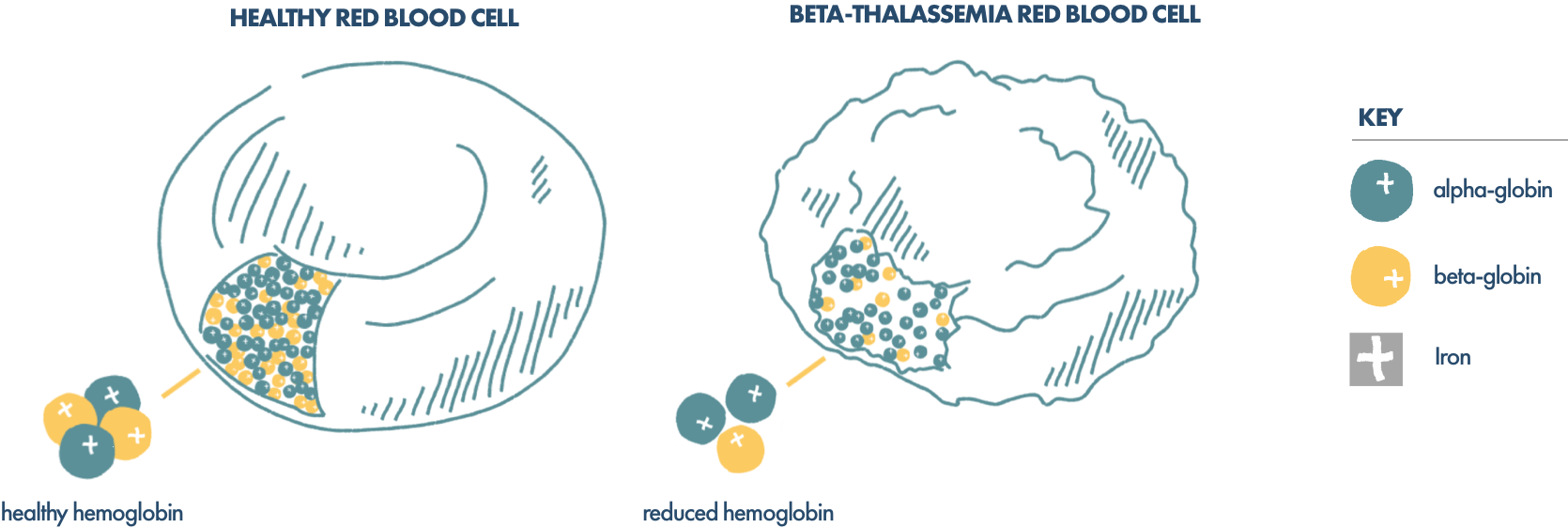
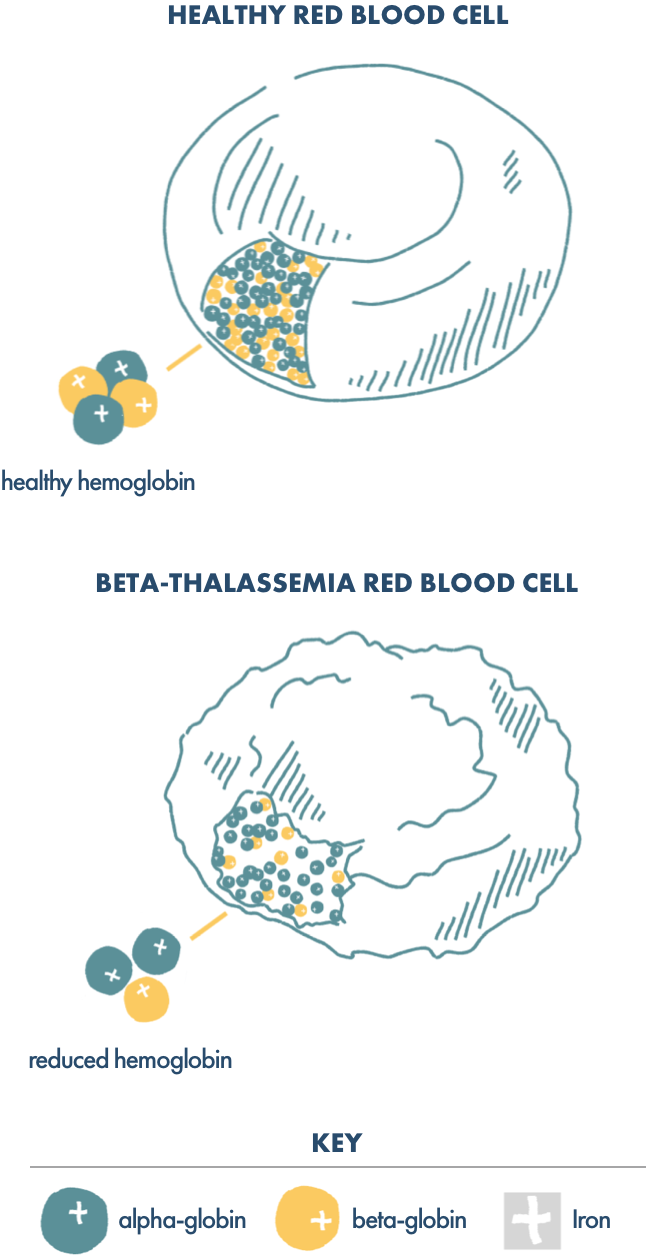
The red blood cells of a healthy person have a greater life span (approximately 4 months) than the red blood cells of a person with beta-thalassemia.
The red blood cells of a healthy person have a greater life span (approximately 4 months) than the red blood cells of a person with beta-thalassemia.
Without enough hemoglobin, there may not be enough healthy red blood cells to carry the oxygen you need to the rest of your body. This condition is called anemia.

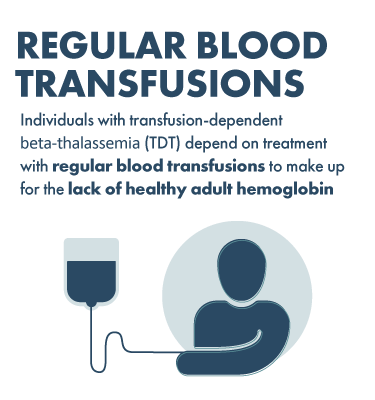
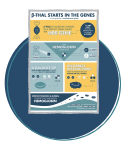
Understanding What's Behind Beta-Thalassemia
Get the facts about what causes beta-thalassemia in this downloadable infographic.
 This website is developed by bluebird bio, Inc. and is intended for residents of the United States who are 18 years and older.
This website is developed by bluebird bio, Inc. and is intended for residents of the United States who are 18 years and older.